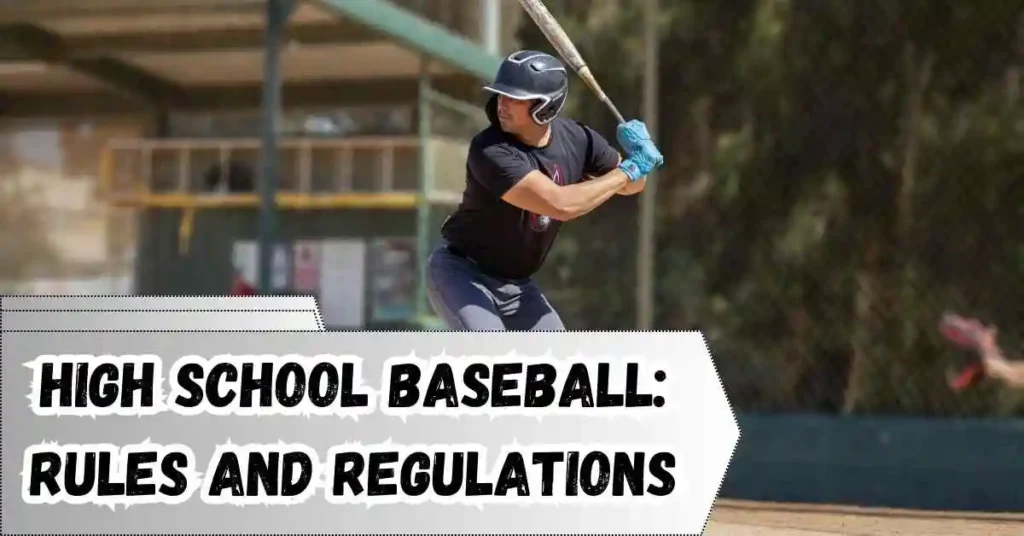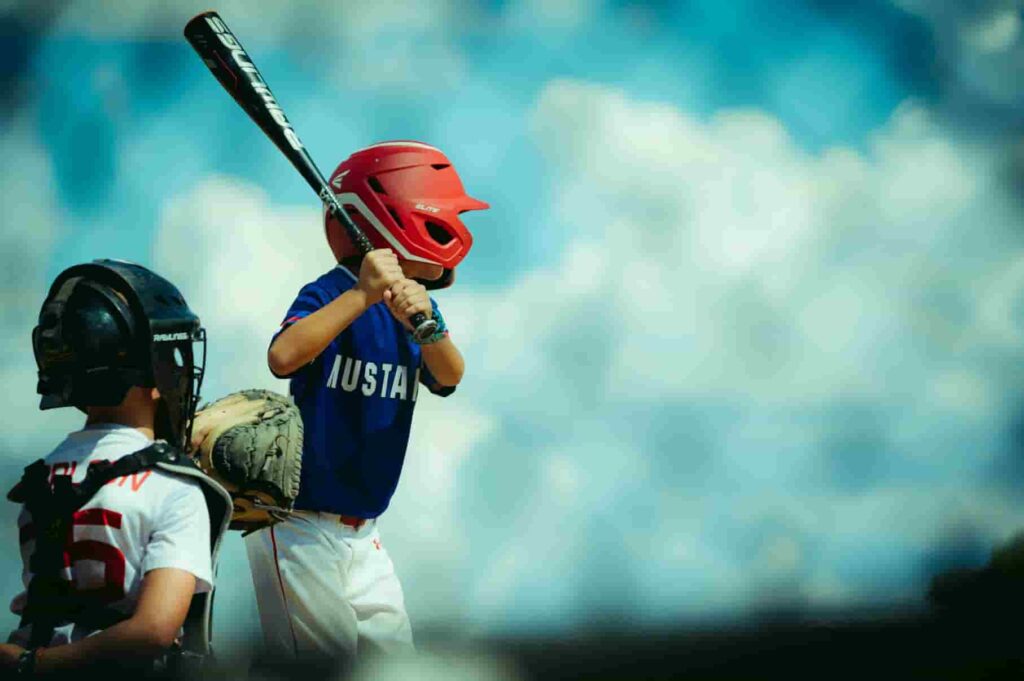
Make-or-break moments await high school athletes hoping to get chosen for the baseball team. They help athletes begin their high school baseball games journey. The most important things you can do to impress your coaches, whether you’re a beginner or more experienced, are being prepared, confident, and skilled.
This process is tough because a large number of players are competing for a few available positions. Gaining knowledge about the tryout baseball format and the potential challenges that may arise can encourage and prepare you. We’ll outline everything you should know for baseball tryouts in high school, such as the tips for baseball tryouts, exercises, and actions that help you appear as a top member of the team.
The Baseball Tryout Format:
Your chances of doing well at a tryout baseball depend on how well you understand the format. Tryouts in high school are usually held over one to three days, divided into many smaller parts. Skills related to each role will be taught every day, and you will be assessed in several areas.
Day 1: Physical Drills
Most coaches will have the first day focus on skills like running, hitting, and fielding. Prepare for a 60-yard sprint to see your speed and then participate in workout drills that show how you react to ground balls. You will also find hitting drills where you show your batting actions and coordination between your hands. Leaders will pay attention to those who consistently perform well.
Day 2: Live Play Situations
On the second day, players usually have live games to practice in. You may play in practice games or simulated scrimmages. Today gives coaches a chance to notice your skills and your attitude toward your teammates. Make sure you speak professionally, stay positive, and are attentive to your work.
Day 3: Position-Specific Evaluation
For three-day tryouts, coaches tend to focus the last day on how players perform in their matching positions. You’ll need to show what you can do as a pitcher, catcher, or outfielder during your trial. This day is your moment to amplify your usefulness to the team and explain why they need you.
Baseball Drills for Tryouts:
Baseball tryout drills can really help you prepare for what to expect during the tryout. These exercises allow you to improve and make a better impression on the coaches. Below are important drills to add to your training:
Fielding Drills:
A typical drill is to catch grounders and fly balls to elevate your defensive skills. You need quick reactions with emphasis on the placing of the glove and accuracy of the throws. Coaches value good fielding.
Hitting Drills:
You should practice batting with a baseball, not one you are going to use in a game. In your training, make use of soft-toss and tee work. And while you`re on the tee, use Some drills to hone that swing of yours, remember not to take your eye off the ball, and concentrate on increasing power with greater accuracy.
Throwing Drills:
Arm strength is a big deal, and practicing throwing helps you hit and put the ball where you want it to go. You’ve got to long-toss, you’ve got to make snap throws, you’ve got to work on different types of pitches if you’re a pitcher.
Speed Drills:
It’s likely that if you want to run faster and more nimbly, doing sprint drills will be beneficial to you. Focus on the first step and make sure you are running as fast as you can with every stride.
Position-Specific Drills:
Practice the game plays even when not in game, may seem simple but is the most essential function to success. Catcher need to stop the pitches right away and pitchers need to start getting it over to the mound consistently.
What You Need for Baseball Tryouts:
Getting ready for high school baseball tryouts requires developing other skills in addition to your actual skills. These tips can help you do well at your baseball tryouts:
1. Be Prepared:
Being ready is the most important part of succeeding. Get ready by going over the same moves frequently and focusing on things you or your team aren’t comfortable with. Review the drills for baseball tryouts you’ll be tested on and run them at home or with a coach.
2. Stay Focused and Positive:
Keep your spirits up, even when it’s bumpy. Coaches take note when players bear down and give their all, even when they’re in a slump. Additionally, let them know that adversity doesn’t affect you and its all part of the game.
3.Team Communication and Team Play:
While strength is a highly appreciated trait, coaches are interested in players who can perform as a part of a team. Just remember: put effort into working with your team by at least calling and cheering them up.
4. Just go with the flow:
Nerves are normal in tryouts, but don’t worry too much about everything you do. Simply concentrate on what you like to do, and your skills will come out on their own. Athletes who remain assured and regulated when the pressure is on are respected by their coaches.
What to Wear to Baseball Tryouts:
What you decide to wear matters, because it can say something about how prepared and professional you are. Here’s some expert advice on wearing the right outfit for your needs.

1. Easy to Wear, Active Gear:
Choose lightly weighted clothes that keep you dry and help you move easily. Wear tight clothing that does not get stuck somewhere or impede your actions.
2. Baseball Cleats:
You need cleats to help you stay secured while moving on the field. Properly fit your sports shoes so your feet are comfortable in sports settings.
3. Baseball Gloves and Bats:
If you want, bring your glove and bat to use, especially if you care which ones you play with. Broken in your glove and pack a bat that makes you confident when you swing it. Having your gear is often important to coaches.
4. Protective Gear:
If you are a catcher or pitcher, don’t forget to bring a catcher’s cup or leg guards with you. When you have your equipment, others will know you mean business.For those interested in equipment standards, learn what helmet stickers mean.
Body Armor State Games:
Should you want to compete past high school tryouts, playing in the BodyArmor state games can help you display your abilities. Often, these games include top athletes, which allows players to get noticed by college recruiters. Going to these events helps you sharpen your abilities against others and can get you known among those managing baseball.Check out options for college baseball uniforms that may be available during such tournaments.
How to Run Baseball Tryouts:
How well a coach conducts tryouts matters as much as what they notice in the players. You should organize the tryout day carefully to ensure players are evaluated more efficiently. Here are a few tips on baseball tryouts:
1. Plan Ahead:
Plan and organzie a schedule so you won’t rush yourself while looking at the candidates’ skills. Always allow players to have enough time to show what they can do in drills.
2. Focus on Fundamentals:
Pay close attention to the main and fundemental skills in your drills. For an athlete, these include how fast and accurate they can represent movements and how much they can manage the same movements again and again. Coaches ask that players gain mastery in basic skills and continue to improve.
3. Assess Mental Toughness:
t’s not only about the physical part when it comes to winning a spot. Look for players who do not lose their focus, who remain positive and who don’t let tough times rattle them.
A Youth Baseball Tryout Plan:
Younger athletes rely on a carefully constructed tryout plan generated by their coaches. This plan should also consider use of tests that cater to the needs of young athlete trainees with emphasis placed on “play”, “learn”, and “improve”. “Having everybody be smiling through their tryouts is important, whether or not they make it.
Conclusion:
Becoming a member of your high school’s baseball team starts with tryouts. Getting to know the tryout process, practicing helpful drills, and following these tips will help you prepare for baseball tryouts. Make sure to concentrate, feel self-assured, and remain optimistic, so your coaches see your value as a member of the team.
FAQ’S:
What will happen during high school baseball tryouts?
You should get ready to participate in fielding, hitting, and running routines. In addition, tryouts might use games and direct evaluations for each player’s position.
Which baseball drills for tryouts should you use?
You should use drills that work on catching, hitting, pitching, and running. Doing drills that fit your position can improve your chances of being noticed.
What should I do to prepare myself for high school baseball tryouts?
If you play everyday, working on your skills and you know the baseball tryout drills coming up, you will be prepped. And don’t forget, when you’re trying out, that it’s vitally important that you stay positive and confident.
